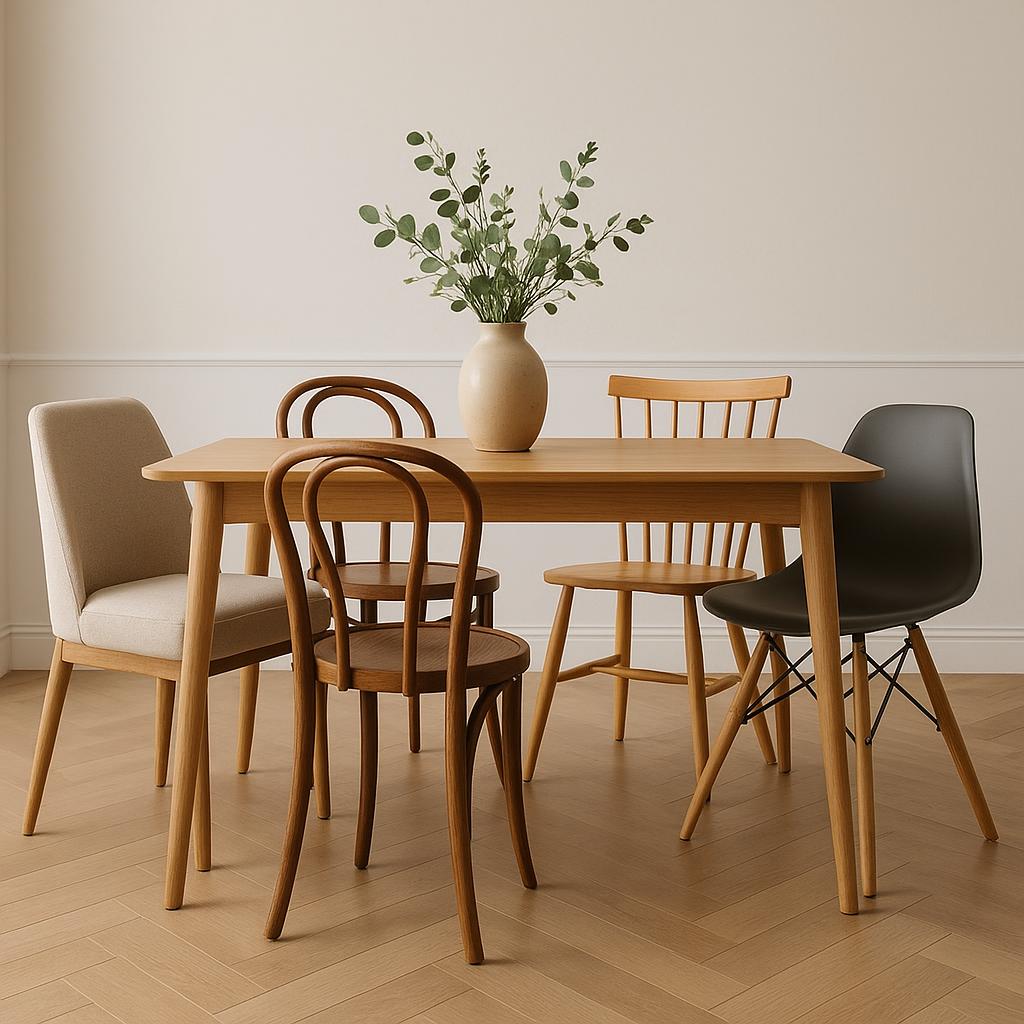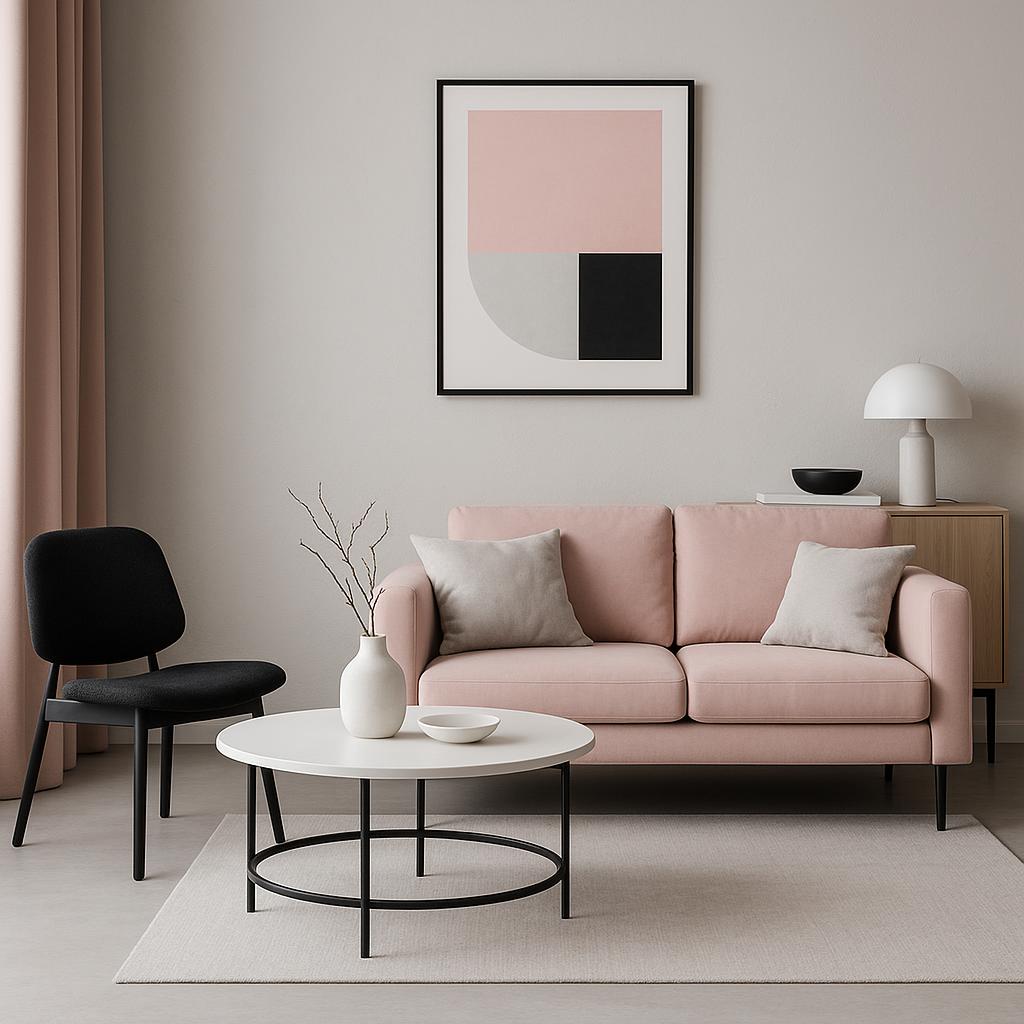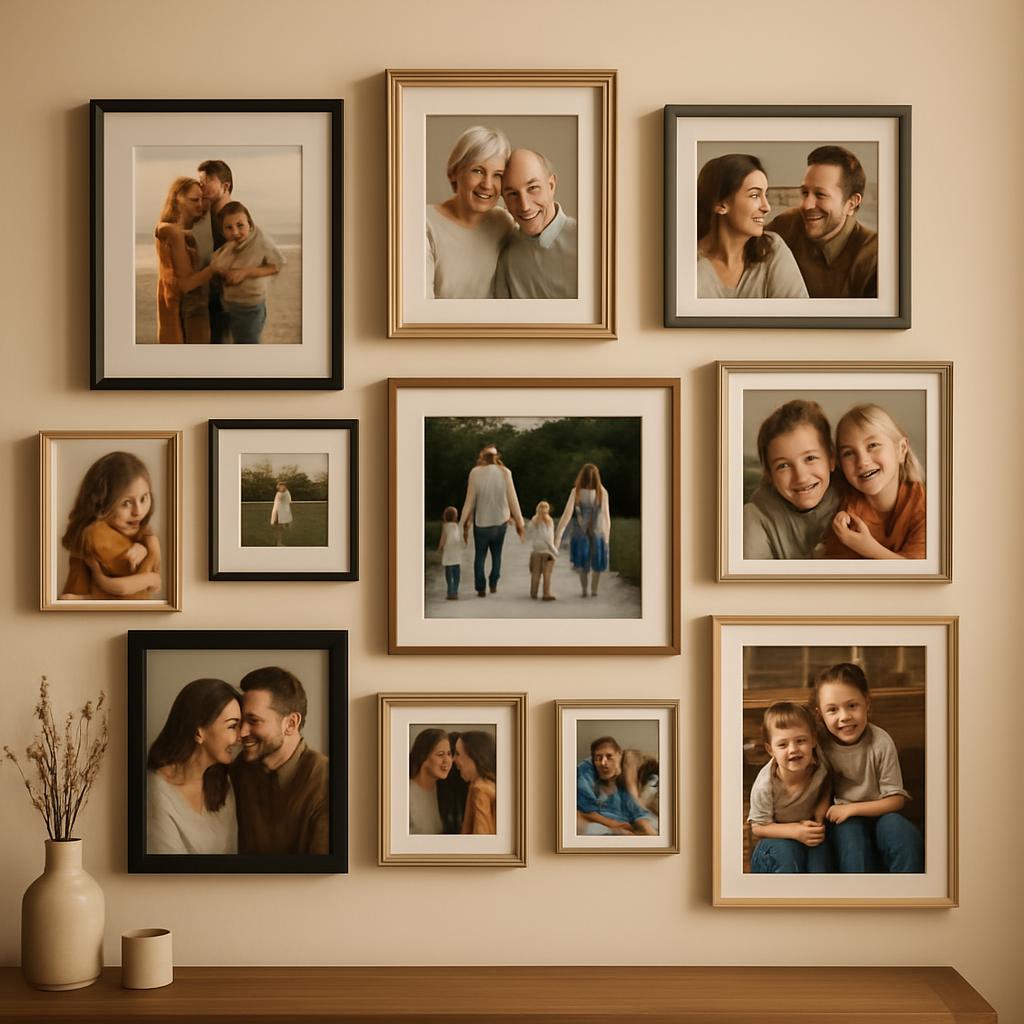We love symmetry. It's how we're "coded." Patterns are beautiful. Twins are proper. We put identical glasses on the table. Identical plates. If one breaks from the set, we mourn it.
Is it the same with chairs around the table? Or maybe not...
There's something profoundly human about our attraction to order and repetition. It speaks to our desire for control, for predictability in a chaotic world. Yet, within this love of symmetry lies a quiet rebellion—a whisper that asks: What if we dared to break the rules?

In a dining room, chairs arranged around a table are expected to be identical. This creates formality, order, and harmony. But what if we mix things up? Can we create a more intriguing visual by using chairs of different styles?
Imagine walking into a dining room where no two chairs are identical, yet everything feels intentional, curated, right. This is the magic of thoughtful eclecticism—where each piece has earned its place not through conformity, but through its unique contribution to the whole.
Rules for Mixing Chair Styles
The art of combining different chair styles isn't about randomness—it's about creating deliberate harmony through carefully chosen relationships. Here are the principles that guide successful chair mixing:
Unity through Scale: Even if your chairs are different styles, they should share similar proportions. A delicate Windsor chair paired with a massive leather dining chair will create visual discord, not interest.
Color as the Common Thread: Different styles can be unified through a shared color palette. Five completely different chair styles all painted in the same deep navy create cohesion while maintaining individuality.
Material Harmony: Wood chairs of different styles but similar wood tones create a sophisticated mix. Similarly, all upholstered chairs in varying fabrics but unified texture families work beautifully together.
The Rule of Odd Numbers: Use three or five different chair styles rather than two or four. Odd numbers create more dynamic, natural-feeling arrangements.
When Uniformity Wins
Despite the allure of mixing, there are times when identical chairs reign supreme. Formal dining rooms benefit from the authority of matched seating. Small spaces can feel more spacious with uniform chairs that don't compete for visual attention.
The decision between matched and mixed isn't about following trends—it's about understanding your space, your lifestyle, and your personal aesthetic. Both approaches have their place in thoughtful design.
Perhaps the most sophisticated approach is knowing when to break the rules and when to embrace them. After all, the most interesting rooms—like the most interesting people—know exactly when to conform and when to rebel.


